Pregnancy-related deaths skyrocket in Michigan
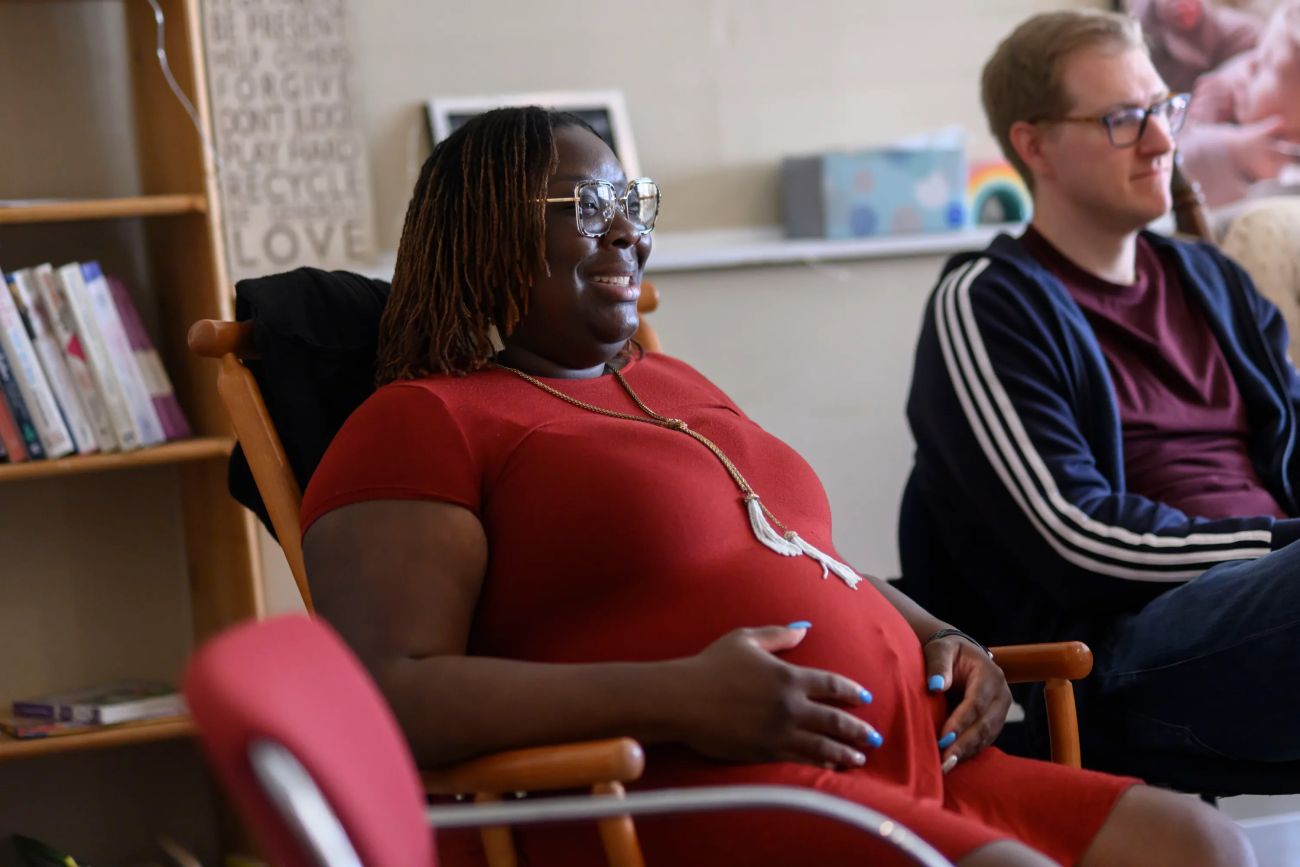
When Asia LoveLady found out she was pregnant, she knew she wanted doctors who would take her seriously.
She’d been ignored before, and she didn’t want to risk anything when the health of her baby — a son, due in August — was on the line. She knew her own health could be, too.
She wanted someone who would work with her rather than someone who would shrug her off. And she wanted a Black provider because LoveLady herself is Black, and she wanted someone she felt would understand her concerns.
In her first provider, she found none of that. LoveLady ended up with a white provider, one who dismissed some of her concerns and failed to answer questions about important topics, including gestational diabetes and hypertension.
“She made recommendations for me, but then when I tried to ask for more information, she dismissed it,” LoveLady told The Detroit News. “I would ask questions, and it was like she didn’t understand what I was saying. My fiancé would ask her questions, and it felt like she was trying to remember what was in her textbook. It didn’t feel good.”
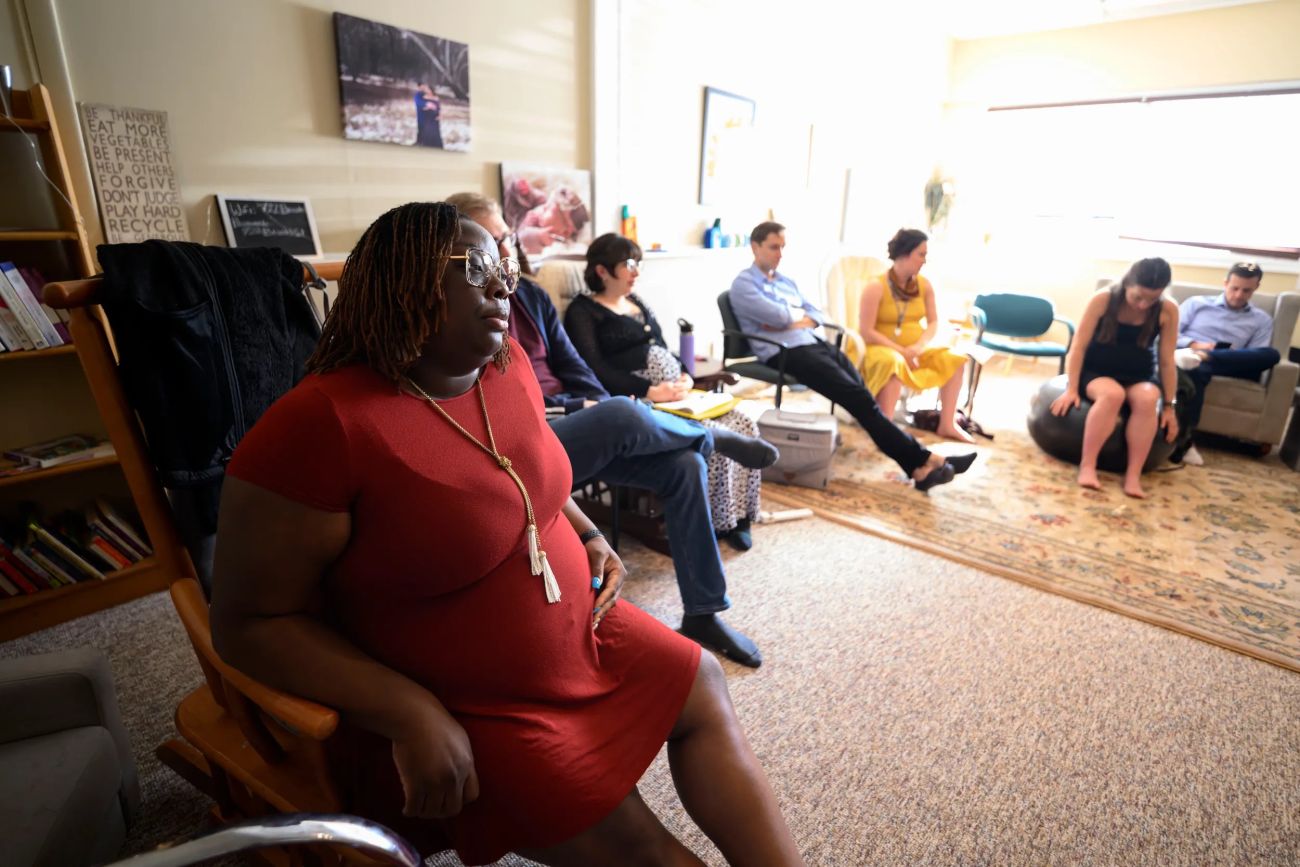
In that interaction, LoveLady joined other pregnant women who have been brushed off by doctors, ignored or taken less seriously. It’s something Black women report more commonly than other races, and the consequences can be dire.
Related:
- Eldercare aide shortage prompts 1.7M Michiganders to care for relatives
- Audit: Michigan child welfare system slow, leaving kids at risk
- 1 in 5 Michigan kids are obese. Doctors are turning to weight loss drugs
The United States lost nearly 4,300 mothers between 2018 and 2022, deaths that occurred while the women were pregnant or within 42 days of the end of the pregnancy “from any cause related to or aggravated by the pregnancy or its management, but not from accidental or incidental causes,” according to data from the Centers for Disease Control and Prevention.

This story was produced through the New York & Michigan Solutions Journalism Collaborative, a partnership of news organizations and community groups dedicated to rigorous and compelling reporting about successful responses to social problems. The group is supported by the Solutions Journalism Network.
The collaborative’s Health Equity Solutions Project focuses on potential solutions to challenges in health care.
In Michigan, there are between 80 and 90 maternal deaths each year. Between 2011 and 2020, the most recent data available from the state, that number trended upward, including a 33.6% increase from 2019 to 2020. The maternal deaths are classified in two ways: pregnancy-associated and pregnancy-related. Pregnancy-associated, which accounts for the largest percentage of deaths, covers all deaths that occur while a woman is pregnant, as she is giving birth or within a year of pregnancy.
Pregnancy-related means mothers in the same time frame who die as a direct result of conditions related to or aggravated by pregnancy. That is a smaller percentage but still accounts for more than 100 deaths between 2016 and 2020, according to state data.
Each of the pregnancy-associated deaths is reviewed by a committee of health experts to determine whether pregnancy contributed directly to the death to try to track trends and make policy recommendations.
In Michigan, pregnancy-associated mortality for American Indian/Alaska native women is almost twice as high as it is for white women; Black mothers are more than 75% more likely to die than white mothers. From 2016 to 2020, the state found almost three-quarters of all pregnancy-related deaths were preventable.
The numbers mean that at least 80 Michigan mothers are no longer around to care for their new babies, support their families or be a vibrant part of their community.
In most countries similarly wealthy to the United States, the maternal mortality rates are much lower. Women in Australia or Japan or Norway don’t die at nearly the same rate while pregnant or immediately after. It’s something that’s attainable here, too, experts said — but to change the outcome, they agreed the nation must first look at holistic solutions, including those that require a lot of time or money.
Why U.S. maternal mortality is high
There are a few key reasons U.S. maternal mortality rates are so much higher compared with similar countries. There are what experts call the “preventable reasons” for maternal mortality — hypertension and hemorrhaging. These are things that doctors with proper training should catch easily and quickly, reversing them before they hurt the mother or her child.
In the worst cases, it isn’t caught in time or a provider doesn’t have the experience or knowledge to undo the effects. In those instances, having the right care is a matter of life or death.
There are also often underlying health conditions that can be particularly difficult to address during pregnancy. It’s not uncommon for pregnancy to be the first time in a mother’s life that she is receiving consistent health care.
But federal law only requires that states provide pregnancy-related Medicaid coverage for 60 days, or two months, post-partum. Medicaid, government health coverage for low-income people, covers more than 40% of births in the United States, and losing access to care so quickly can leave mothers in the lurch. Recently, many states have opted to extend that coverage to 12 months post-partum, funded either through money from the American Rescue Plan Act (passed in 2021 as a COVID measure) or through state money. It’s a relatively new policy in many states, but experts agreed it is likely to save lives.
But those aren’t the only causes of maternal death. A big one, doctors and researchers said: Medical racism, which has been documented for years by a variety of organizations. Medical racism is best described as discriminatory medical practices against patients as a result of bias from providers. In practice, this often looks like doctors not taking seriously the concerns of Black patients.
One in five women are mistreated during their maternity care, according to a CDC report released in August. For women of color, that number is higher — more than a quarter of multiracial women reported mistreatment, for example, or nearly one in three Black women, according to that report.
“These things certainly aren’t happening in a vacuum. The nature of inequity is that it’s patterned and it’s systemic,” said Elon Geffrard, perinatal support and education director and one of the co-founders of Birth Detroit, a community-based maternal care group looking to improve infant and maternal outcomes across the city. “We know the history of this country has created systems devaluing certain bodies — male over female, white over Black and brown. Those insidious values have eked into the very health care systems where we expect people to be objective and caring and unbiased.”
For some mothers, it makes stepping into an obstetrician’s office a fraught task. When someone is pregnant, it’s not just their own person they have to worry about — it’s also the baby. It’s what flagged to LoveLady that she probably needed different care, but she’s far from the first woman to feel that way.
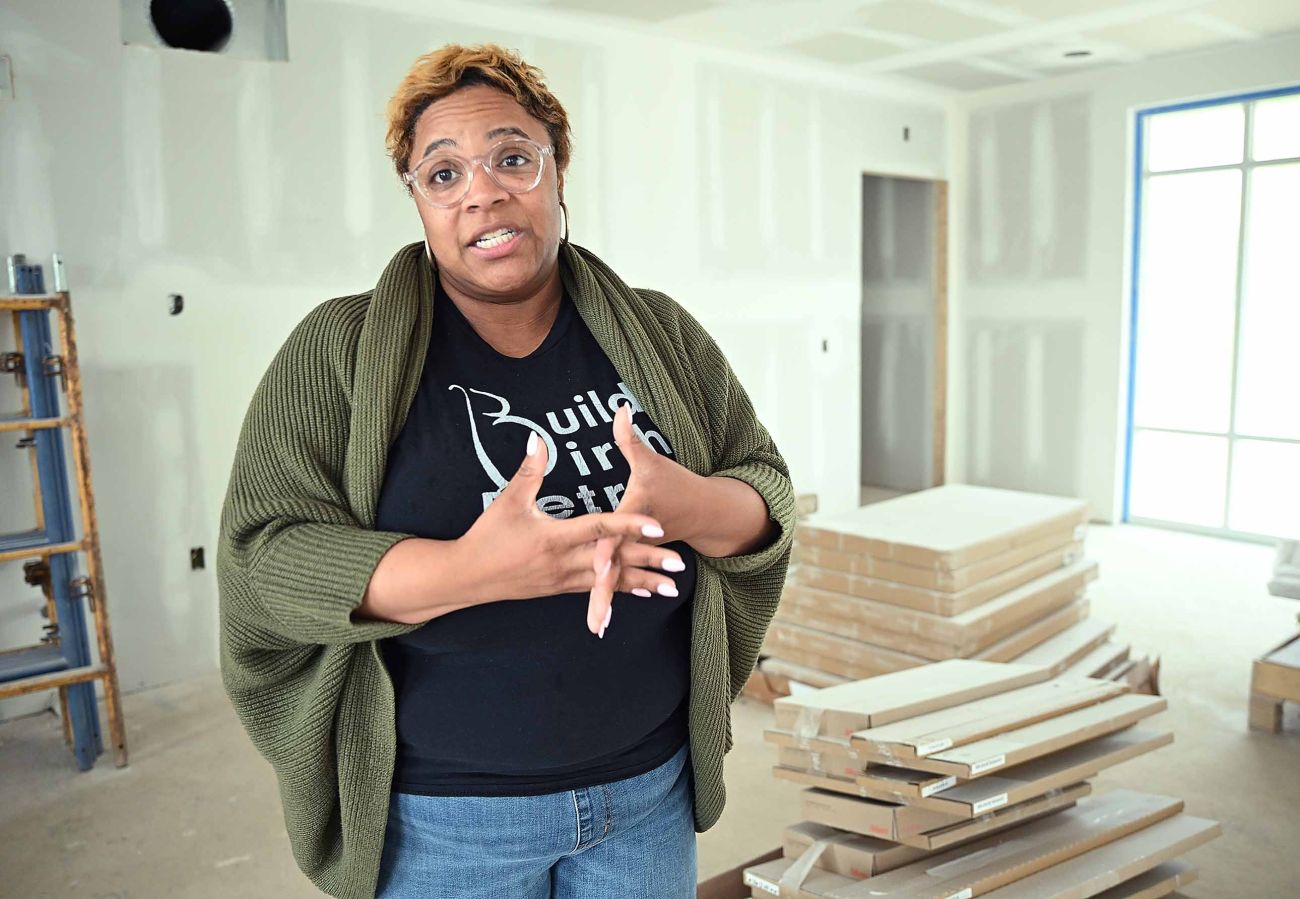
What other states are doing
In California — the state with the lowest maternal mortality rate in the United States — strides have been made by working to address not just one problem but as many as possible.
It started in roughly 2006, when the rate of maternal death was reaching a peak, said Dr. Deirdre Lyell, the co-director and co-principal investigator for the California Maternal Quality Care Collaborative. The state was seeing 16.9 deaths per 100,000 live births, more than twice the 8.0 rate seen just a few years prior in 1999. From 2002 to 2007, that meant more 1,000 women were dying from all causes during pregnancy or within the first year after.
The collaborative was founded as an effort between the California Department of Public Health’s maternal, child and adolescent health division, the CDC, Stanford University, and several groups dedicated to health and wellness in California. It’s supported by groups such as the March of Dimes, the Gates Foundation and more.
The state wanted to understand why the maternal mortality rate was so high, Lyell said, and started funding research initiatives into the reasons. The result was an in-depth look at the reasons for maternal death with experts from a variety of different fields.
“They looked at, ‘Why did something terrible and unexpected happen? In which cases would these deaths have been preventable?’” Lyell said.
California found that, like in much of the U.S., hypertension and hemorrhaging were the major causes of death. It was a good start, Lyell said, but the important step was what came next: The state began to look at where it could make the most impact. If hypertension and hemorrhaging are preventable, what could California do to make sure they were actually prevented?
“I’m a high-risk obstetrician, so I have a lot of training on how to take care of someone in an acute situation,” Lyell said. “I’ve done a lot of high-risk drills. At smaller hospitals, they don’t see those acute events as often. So how do you handle them?”
Providers are trained to recognize symptoms, but sometimes, it’s too late to be able to do anything. In emergency situations, you need not only the time to mobilize but also someone who knows exactly what to do with the resources once they have it.
So California pulled together a broad set of stakeholders — not only hospitals, but professional societies, patient groups, the public, anyone who might have something meaningful to contribute, and it created a maternal data center that launched in 2012.
The data updates regularly, Lyell said, providing leaders a real-time idea of how a hospital is doing in maternity care. Patient discharge data, which is already collected by hospitals, is uploaded to the data center. It’s a “low-burden tool,” according to the collaborative, used by more than 200 hospitals across the state.
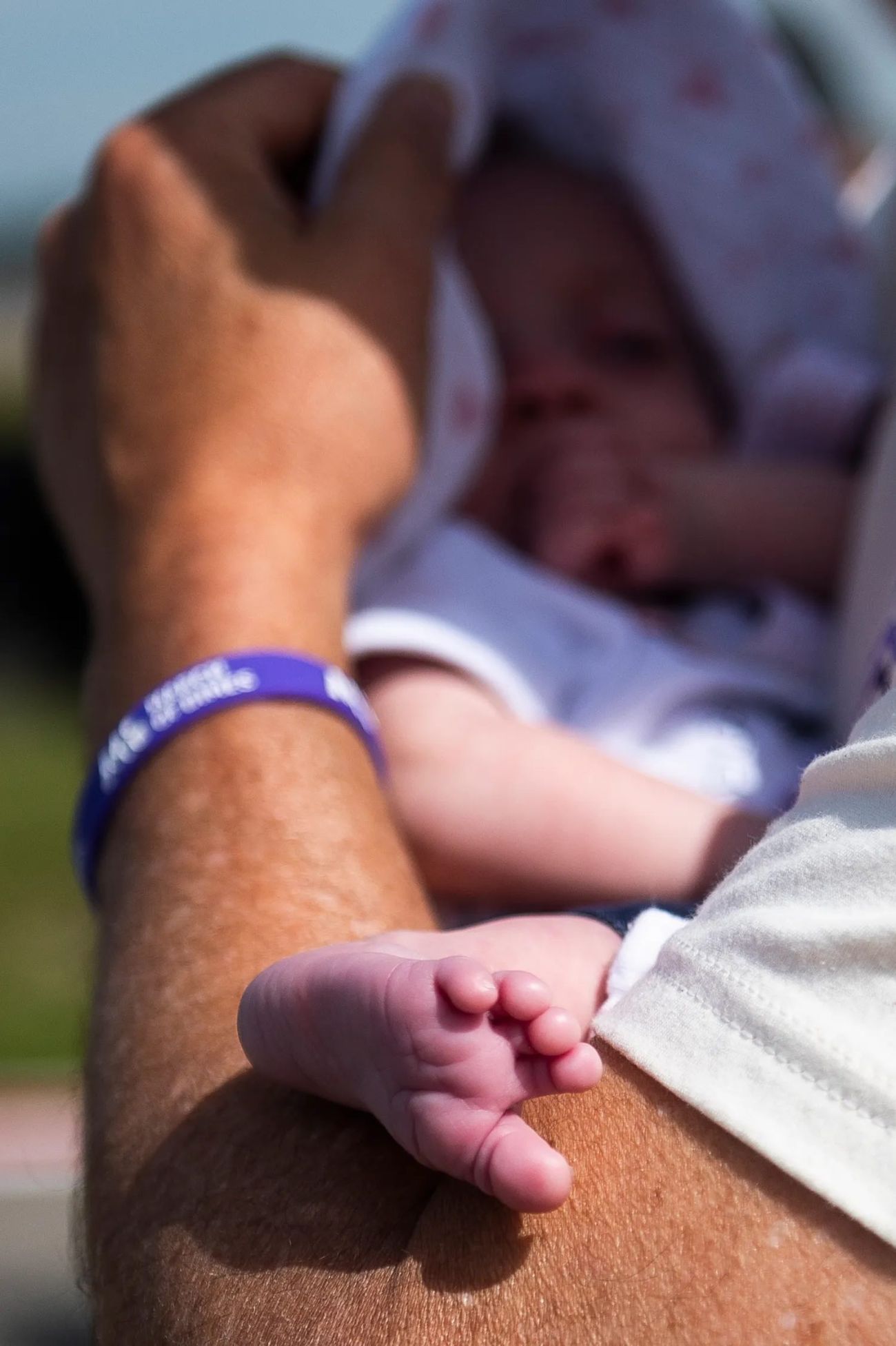
It allows hospital leaders to examine an individual hospital's performance and compare it with benchmarks not only at the system level but also at the regional and state levels. It’s a powerful tool that can save lives by flagging problems early on.
“Everyone thinks they’re doing a good job, and most people are,” Lyell said. “There’s always room for improvement, though, and the data don’t lie. We might think we’re doing fantastically in our own institution, but the maternal data center gives providers and leaders a comparative analysis for like institutions.”
Data collection at such a significant level helped to shape the collaborative's toolkits, which are available to hospitals and provide guidelines and support for medical providers who may be encountering an unfamiliar situation.
The toolkits offer tangible, step-by-step ways for providers to handle a variety of dangerous situations that can pop up during or after birth. In the hemorrhage toolkit, for instance, there are guidelines on how to care for someone available in three separate formats (a checklist, a table and a flow chart that could be hung in a delivery room), as well as simulations and drills, discharge planning sheets that flag to a patient some things they might need to call their doctor about, as well as list their follow-up appointments and more.
Education and tools have been pushed out to all providers, Lyell said, including messaging and toolkits in “every single labor and delivery room.”
“If you’ve ever been in this kind of situation, you end up very task-saturated,” she said. “So you put the guidelines on every wall — if you’re this far into it, think of this medication or that one.”
The toolkits have been a significant effort, but they have paid off: California’s rate of maternal death is now the lowest in the country, according to the CDC.
It goes beyond a single provider, Lyell said. Individuals want to do the right things, but the numbers in front of people who know what to do with them have made a significant difference. There is still a racial disparity in California, one that leaders are working hard to address through efforts such as the “Momnibus” bill California Gov. Gavin Newsom signed in 2021.
That law expands access to doulas and midwives. It also extends Medicaid to mothers a full year post-partum, helping to address the dangerous health problems that aren’t necessarily resolved six weeks out.
“California has had some wins. It would be amazing if other states had resources to follow this and create a maternal data center of their own,” Lyell said, adding that no one person or hospital can implement change at scale by itself. “Something like this takes a broad number of stakeholders. That’s No. 1. Also, having data is really key — you need to be able to measure outcomes and know what’s making a difference.”
What Michigan is doing
Michigan is doing important work to bring down the state’s maternal mortality rate, although experts agree more can always be done.
From 2018 to 2021, CDC numbers show that Michigan had a maternal mortality rate of 19.4 deaths per 100,000 births. That’s just shy of twice California’s 10.1 maternal mortality rate, but it’s far from the worst. Of the 37 states with large enough populations for the CDC to be able to maintain confidentiality, Michigan ranks 11th best.
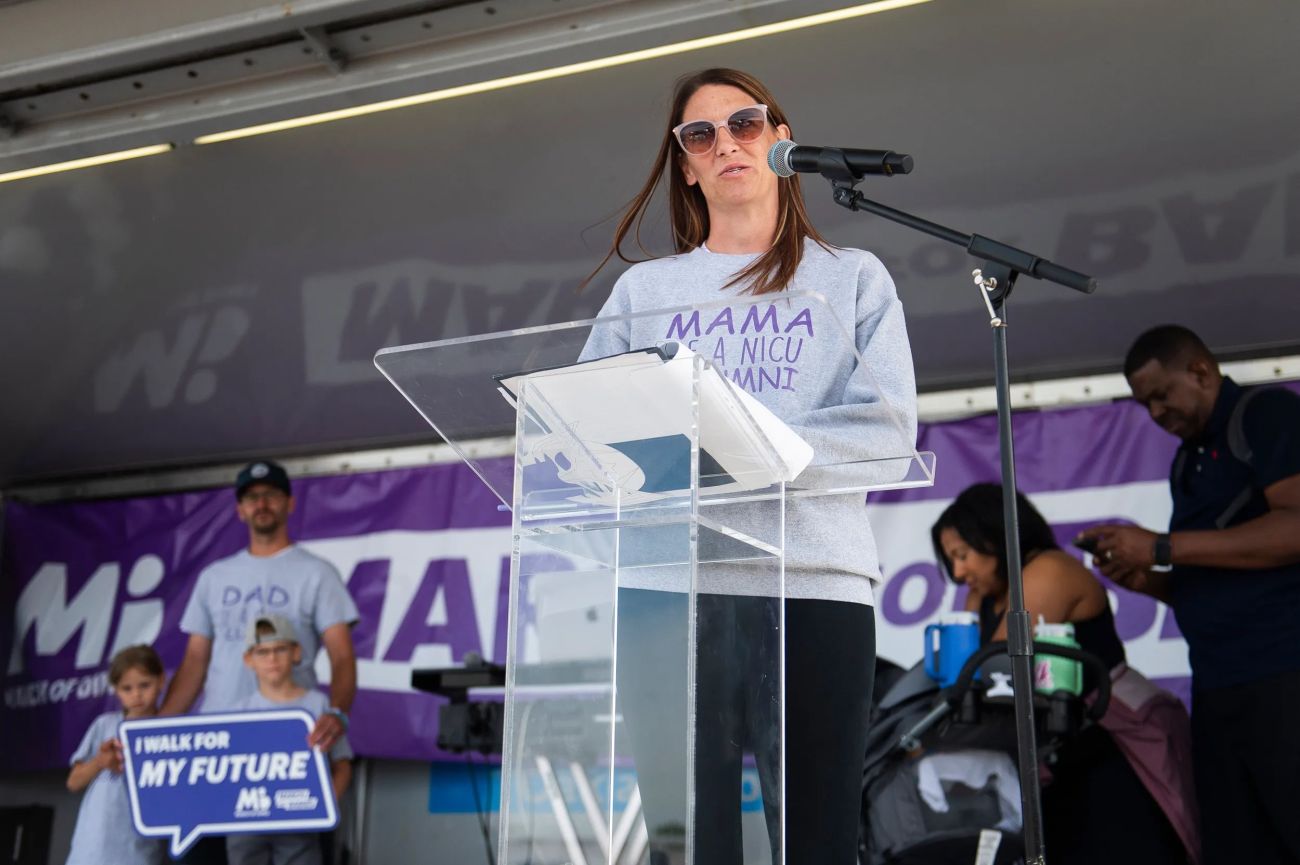
But the March of Dimes, a national nonprofit dedicated to the health of mothers and babies, gives Michigan a D+ grade on its annual report card, which matches the grade the organization gives to the U.S. overall. March of Dimes sponsors March for Babies events across the country — including one locally in Pontiac in June — to raise money and awareness for healthy pregnancies and babies.
Some states get Bs, Cs or Fs, but no state gets an A. In maternal vulnerability, a measure from Surgo Health reported by March of Dimes that looks at a variety of factors to calculate the odds a mother might have poor outcomes, Michigan is considered to have “high vulnerability.” The state gets a score of 66, which puts it just ahead of West Virginia. (Lower scores are ideal in the measure — Alabama gets a 100, while California gets a 34. The best state by that calculation, Colorado, gets a 0.)
Dawn Shanafelt, director of the Michigan Department of Health and Human Services’ division of maternal and infant health, acknowledged that Michigan’s problems match much of what is seen around the country. The state fares better in some measures and worse than others, Shanafelt said, but the key to addressing problems is through communication directly with Michiganians.
That looks like a series of town halls across the state, where Michiganians have a chance to talk directly to officials about what they would like care to look like moving forward. It also looks like expanding programs that tangibly help women — Healthy Moms Healthy Babies, the name for Michigan’s extended Medicaid coverage, is available regardless of income changes for 12 months after the birth of a child and covers not only physical and behavioral health, but also dental care, substance use treatment and more.
Michigan has its own statewide effort, similar to California’s, to bring together a wide variety of stakeholders to address maternal wellness. The Detroit-based SOS Maternity Network (which stands for “synergy of scholars”) brings together several of the state’s biggest universities and hospital systems with state funding to “implement a very massive collective action approach,” Dr. Sonia Hassan said.
Hassan is an expert in maternal-fetal medicine as well as the leader of the SOS Maternity Network. She also is associate vice president of the office of women’s health at Wayne State University, where she is a professor in the department of obstetrics and gynecology.
The goal of the SOS Maternity Network is to reach everyone, both medical providers and community groups, who interacts with pregnant women. Developing a uniform way to care for people and providing the necessary resources can save lives, Hassan told The Detroit News.
“Sometimes these projects are just a one-time, one-off thing, and it’s not enough to make a difference,” Hassan said. “If we can get every provider doing the same thing, and buying in together, we’ll see fewer inequities based on a region or hospital.”
The goal of Michigan’s efforts is to address not only the medical factors around maternal health but also the social ones, Hassan said. To make some resources standard — things like transportation, which she said is often one of the top reasons someone cannot attend a medical appointment — can radically improve a patient’s quality of care. That could even include a “navigator” to help people figure out where to make appointments or fill prescriptions.
As in California, Michigan’s program offers a variety of rigorous trainings to help doctors keep up to date on the latest standards in maternal care. That includes training on implicit bias, which is required for any provider who wants to participate.
Requiring providers to think about bias, even when it pops up unintentionally, is a critical element in making sure that women of color get the same quality of care as white women, Hassan said. Eliminating factors to missing appointments is one prong of the approach; making sure women are treated well once they make it to the appointments is the other.
The network is “slowly but surely expanding,” Hassan said, thanks to a lot of supportive people across the state. The important thing, though, is to keep focusing on collaboration.
What else can Michigan do?
There are still ways for Michigan to grow. To expand, like California’s program, could be a valuable solution, experts said. But others still are looking at different ways that Michigan could bring down its rate of maternal mortality.
One of the biggest is meeting people where their wants and desires are. Doulas, for example, have proven to be a valuable way to help mothers who have just given birth navigate the complexities of health care. Doulas are not medical professionals, but they’re trained in assessing the medical needs of a mother. Having just one more eye on a woman can be helpful, particularly if she’s struggling to get in with her doctors.
Geffrard, one of the co-founders of Birth Detroit, recalled one of her own experiences as a doula where she did a post-partum visit where a woman had symptoms of hypertension but was discharged from medical care. With help from Geffrard and Nicole White, co-founder of Birth Detroit and director of Michigan State of Birth Justice, they got her back into care, but it required changing health systems. By herself, and with a newborn, the woman likely wouldn’t have been able to navigate that, but with experts looking out for her, it may have saved her life.

“She was readmitted 11 days postpartum with a serious condition,” Geffrard said. “I’ve seen it time and time again, even from women still in the hospital. They know when they don’t feel right, they could easily be watched, but they still wind up getting scoffed at.”
Other ways to improve outcomes, experts said? There are lots, including some that other states are already looking into. Expanding Medicaid to include home visits from licensed midwives who can help women navigate the transitional period after birth could make a difference. So could expanding parental leave and including both parents in it.
“Some people go back to work within six weeks, even two weeks of birth,” Geffrard said. “We don’t even adopt out puppies that soon.”
Policy surrounding births and pregnant people typically relies on the individual, but it doesn’t need to be that way. By improving reimbursements for people like midwives and doulas, by expanding leave, even by reframing the idea that just because pregnancy ends a person no longer has medical needs, Michigan could save lives.
That is, in part, the idea surrounding Michigan’s proposed “momnibus” bills, which many experts were excited to see on the table. Like in California and other states, the bills would build on existing laws to ensure that women’s needs are being met during and after pregnancy.
Specifically, the bills — proposed by Democratic Sens. Erika Geiss of Taylor; Stephanie Chang of Detroit; Sarah Anthony of Lansing; Mary Cavanagh of Redford Township, and Sylvia Santana of Detroit — would expand access to midwives by requiring insurers to cover visits and improve protections for pregnant people and identify “obstetric violence or racism.”
The bills have largely been in committee since they were introduced in April, but new proposals to try to improve maternal health have also since come forward. The Michigan House in late June passed a series of bills to, among other things, establish a perinatal quality collaborative with offices across the state. Those are now in the Senate.
The goal is to both mitigate medical racism whenever possible to try to address the racial disparities that exist and also to improve access for everyone.
“The Michigan momnibus centers our humanity,” said White, the Birth Detroit co-founder. “It allows for protections to birth with dignity no matter where they decide to birth. Midwives are critical for reducing maternal mortality. … Most other countries primarily use midwives, and they’re doing a better job of keeping mothers alive.”
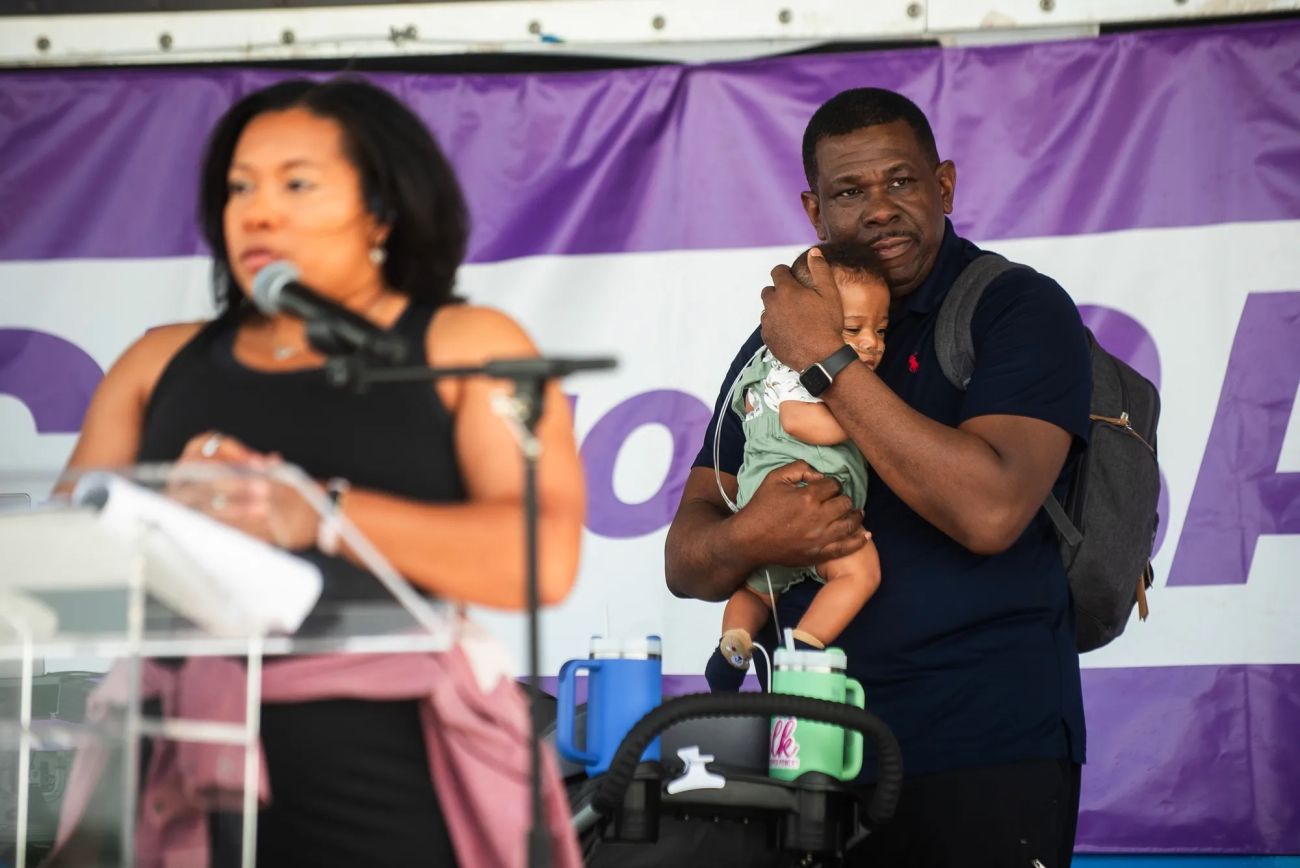
Birth Detroit is preparing to open a freestanding birth center in Detroit later this summer, one that looks to put pregnant women at the center of their health care. By basing the care in the community, the center seeks to be a viable option for women who don’t want to give birth in a hospital but still want the support of trained professionals.
That’s not to say that in an emergency, a woman can’t still be transferred to a hospital. But instead of starting there, a birth center seeks to offer a “home-like” environment to reduce stress and support mothers in the community they live in. In a majority Black city like Detroit, Birth Detroit’s center could be the next step in improving health care for mothers and babies alike.
Advocates for new moms said one of the most valuable ways to support women is one of the oldest and one of the cheapest: Simply giving them a way to be heard.
It’s the foundational idea behind groups like Our Village, founded by Melisa Scott, an Ypsilanti-based nurse midwife and lactation consultant, and LaTresa Wiley, a former OB-GYN social worker and manager of the children and women’s bereavement program at Michigan Medicine.
Our Village was created with the idea that “conventional things aren’t moving the needle,” Scott said. Regular people, the ones who most need services, aren’t often affected by the changes that do happen.
“So we can partner with ourselves. We don’t need someone to come save us,” Scott said. “We can host a space where Black women would get together and decide what they thought would be helpful.”
The group facilitators have brought in experts on breastfeeding support, pelvic floor therapy and mood disorders. It’s about what the attendees (and there are many, not just in Michigan but from around the U.S.) want to see and talk about.
But perhaps the most valuable part is the community that’s formed around the group. It’s women talking to other women about what being a parent looks like. They talk about raising Black sons, they exchange book ideas, they offer solutions to tricky parenting problems. Most importantly, the attendees are simply there for each other at a time when they most need that.
The result is better outcomes, Scott said. She calls it a “no brainer” to support mothers in this way — advocating for change is still critical, but in the meantime, community support makes all the difference.
Asia LoveLady is a member of the group. It’s allowed her to be upfront and honest, and being surrounded by other Black women, she doesn’t feel judged. The group meets largely online every other week.
LoveLady helped to raise her own family members — a little sister, a cousin, a niece — but now that it’s her turn to raise her own baby, she knew she needed help. There are so many things to do when you’re pregnant, she said, and she didn’t know any of them, really.
But Our Village is comfortable and lets her talk honestly about her desires and concerns. She wants to see more programs that support women in that way without fear of coming across as the stereotypical “angry Black woman.”
“It not only gives you a voice to advocate for yourself, but you can share your experiences with the group,” LoveLady said. “There are different resources, great connections and a great network.”
It’s instilled in her a certain confidence she needs as she gets ready for her son later this summer. It takes a village to raise a baby, and LoveLady feels confident she’s found her village.
“I don’t know if I’ll ever be really ready until he’s here,” she said of her son. “But it feels good, knowing these things exist, knowing that I have people on my side. These things matter. I want other people to have them, too.”
See what new members are saying about why they donated to Bridge Michigan:
- “In order for this information to be accurate and unbiased it must be underwritten by its readers, not by special interests.” - Larry S.
- “Not many other media sources report on the topics Bridge does.” - Susan B.
- “Your journalism is outstanding and rare these days.” - Mark S.
If you want to ensure the future of nonpartisan, nonprofit Michigan journalism, please become a member today. You, too, will be asked why you donated and maybe we'll feature your quote next time!





